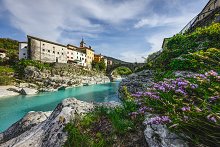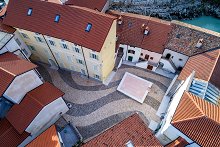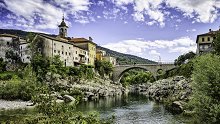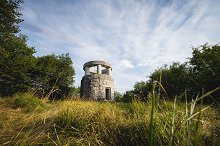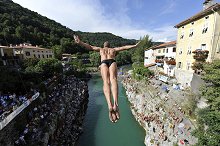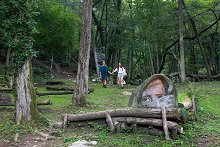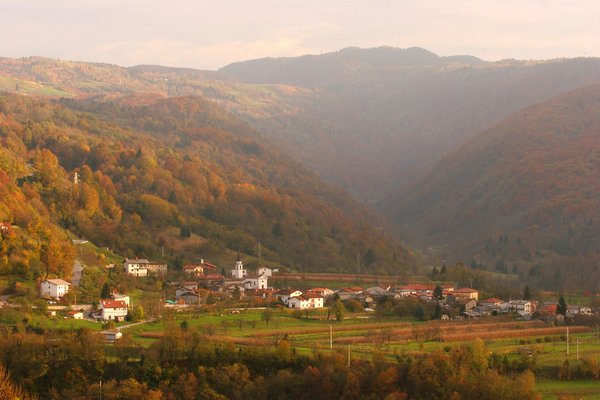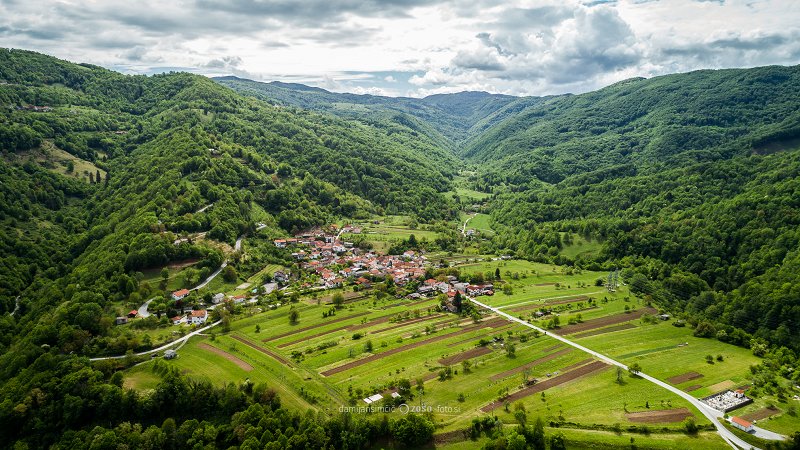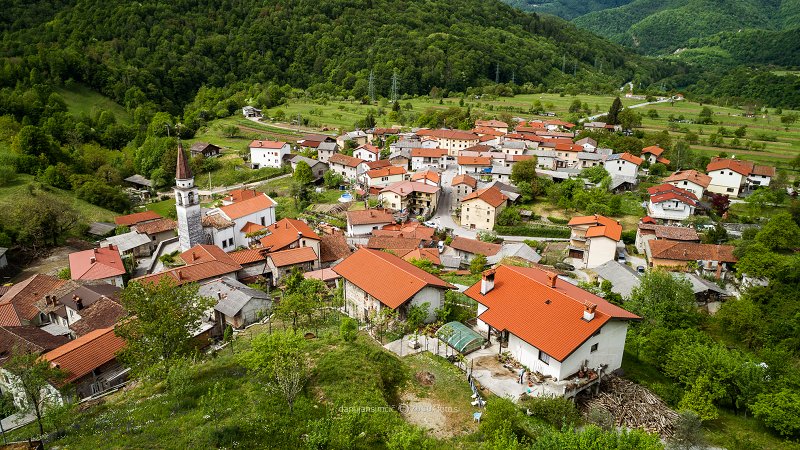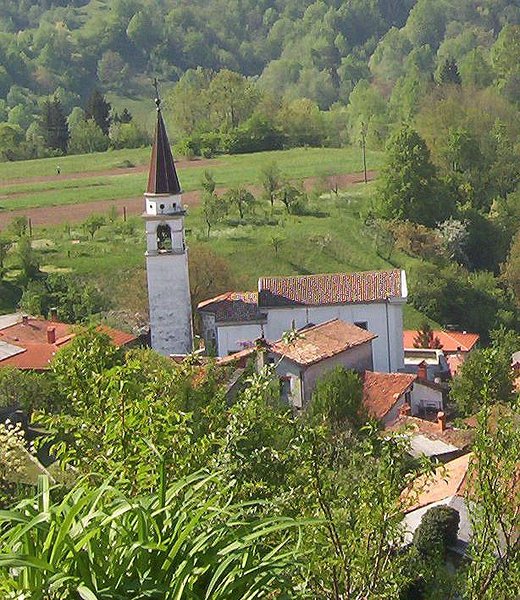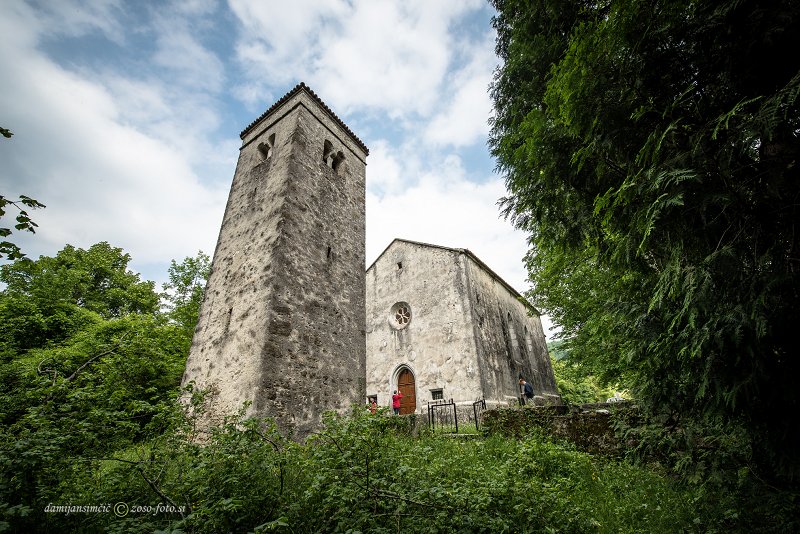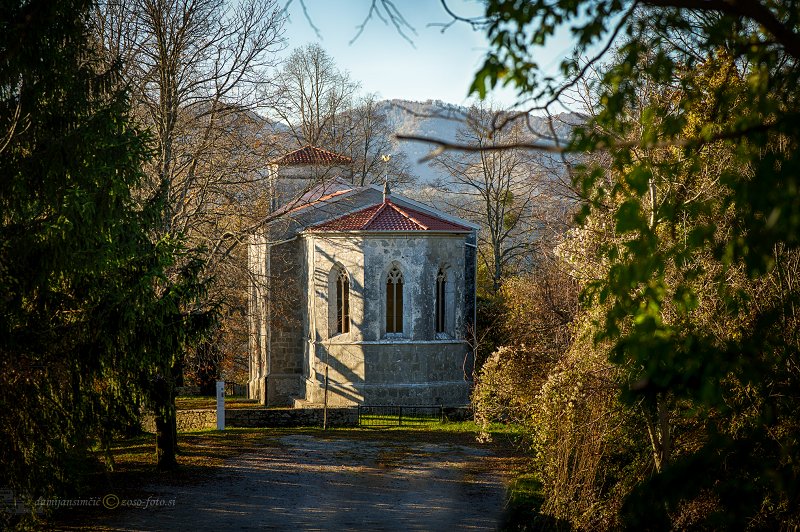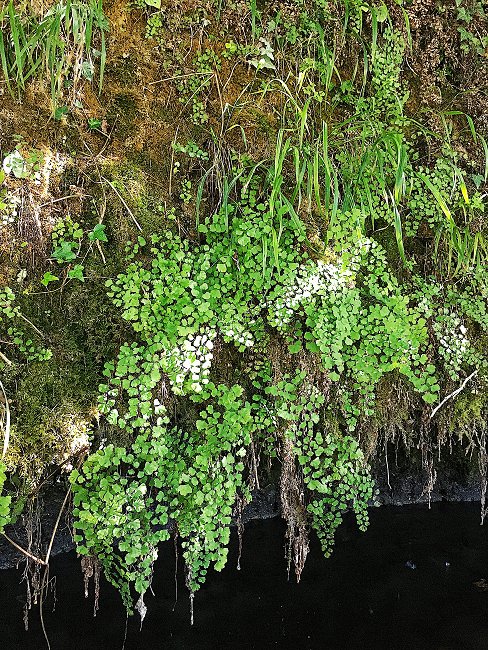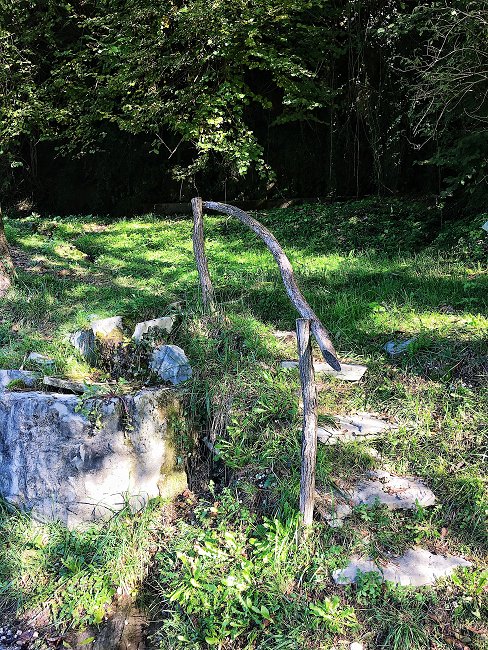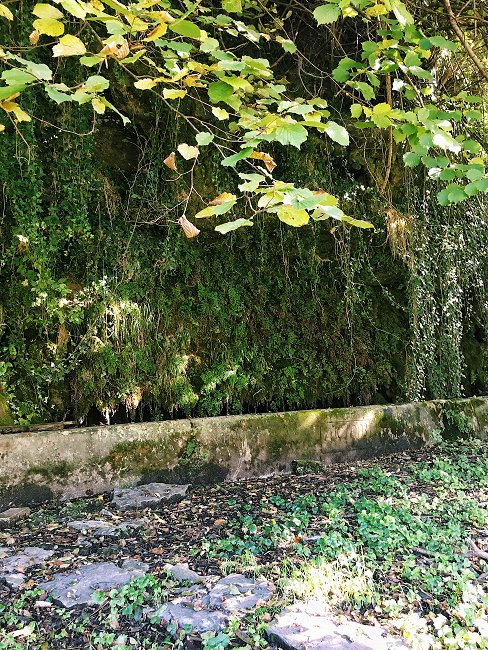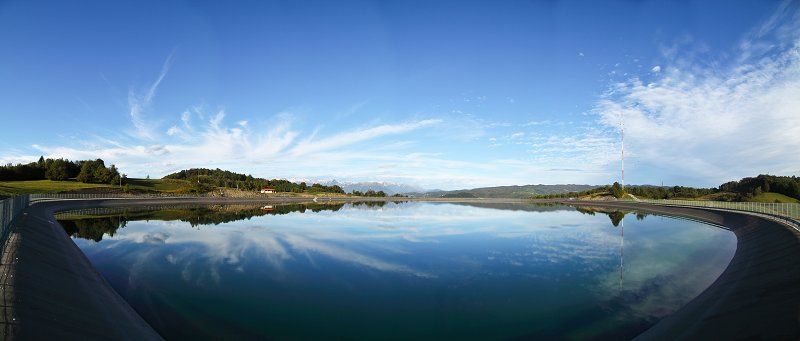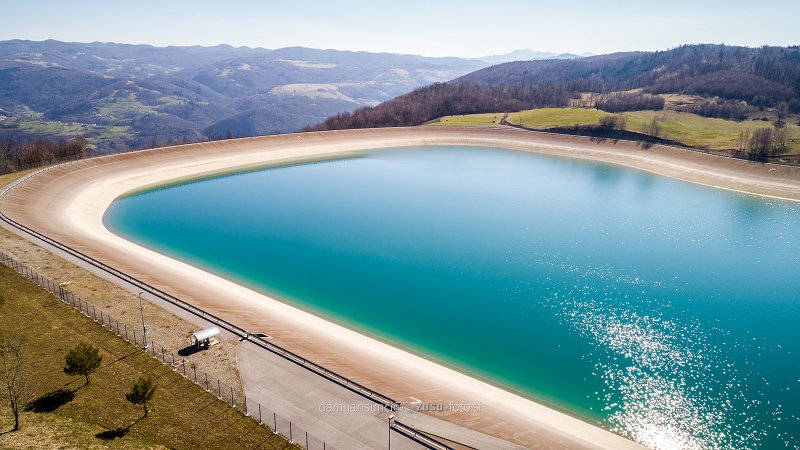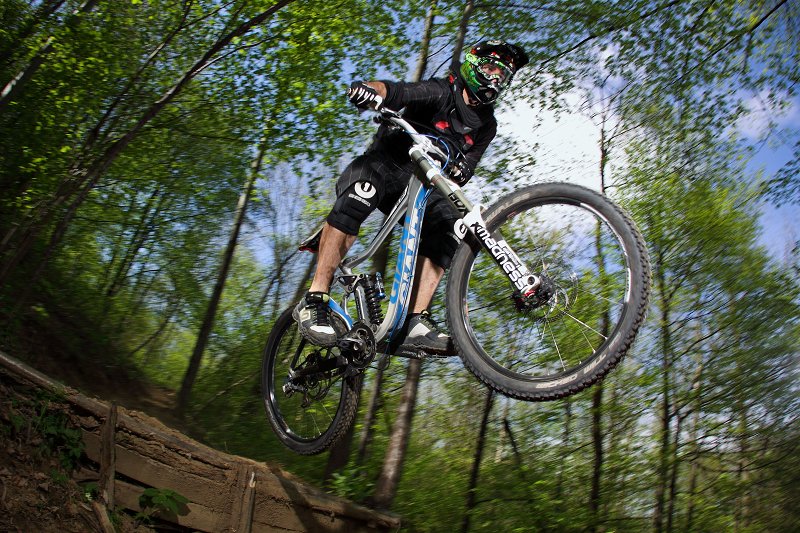Avče
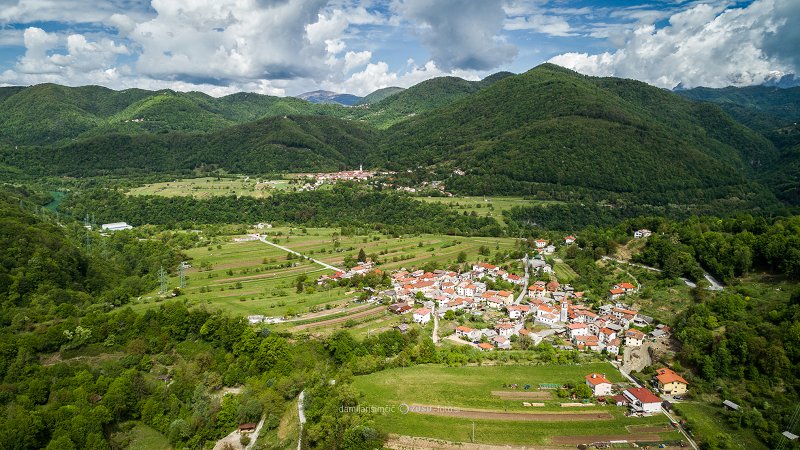 The village of Avče was built in the flysch zone on a terrace of the River Soča west of Kanal. Archaeological discoveries found in the north of the village and in vicinity of Soča and west of it witness that the settlement had already been built before its mention in written documents. The village is squeezed and situated above the tectonic valley of the torrential stream called Avšček, which divides the Banjščice Plateau into two parts: Zgornje (Upper) and Spodnje (Lower) Banjščice. Both parts of the plateau are gathered in the Biškovec Slope (485m). The two subsidiary streams of Avšček are Kajža and the Avček steep mountain stream.
The village of Avče was built in the flysch zone on a terrace of the River Soča west of Kanal. Archaeological discoveries found in the north of the village and in vicinity of Soča and west of it witness that the settlement had already been built before its mention in written documents. The village is squeezed and situated above the tectonic valley of the torrential stream called Avšček, which divides the Banjščice Plateau into two parts: Zgornje (Upper) and Spodnje (Lower) Banjščice. Both parts of the plateau are gathered in the Biškovec Slope (485m). The two subsidiary streams of Avšček are Kajža and the Avček steep mountain stream.
Due to the flysch on the ground, there are many water springs in the Avče territory. The hamlets Dolenji (Lower) and Gorenji (Upper) Avšček also belong to Avče. The first lies in the centre of the Avšček Valley, while the latter lies in the upper area of the river basin. In the direction of Most na Soči there is a railway station below the village of Avče, while just above there is the hamlet Log. There is also an uninhabited village Vrtače (funnel shaped holes) belonging to the local community of Avče. East of the heart of the village, at an altitude of 343m, there is Nadavče with the Marija Snežna Church and only one house. In the direction of Kanal, along the River Soča (on the current power station construction area) there is a building of the former signalman’s cabin. The local community of Avče has a population of approx. 200.
In the village there is Saint Martin’s Church a building in the late Gothic style with a rectangular, straight aisle and a star-like, ribbed arched presbytery with frescoes dating back to 1470. In the church there is an oil painting of Saint Martin with a beggar, which was painted by Andrej Avgust Bucik, who was born in the vicinity of Avče. It was painted for the occasion of the church renovation after World War I. The church excels in its accuracy of reconstruction and rich stony details. When doing the renovation in 1924, they found remains from the Roman times: Roman coins and jewellery and that is why we can deduce that in those times a settlement had already been built.
Marija Snežna Pilgrim’s Church, situated in the Nadavče hamlet, has many interesting details in its interior, but also, when looking from the outside it is an imposing building with a separate bell tower, which is thought to have been built on the remains of a former Roman tower. The church presbytery dates back to 1515. Dating back to nearly the same time are statues, which belonged to the altar in the Gothic style, while the marble altar in a form of front gate dates back to 1701, and altars in the aisle are from the 17th century. The remains of the painting in the aisle were produced by Jernej from Loke in 1530.
The Močila Spring is situated above the Avšček Stream. According to the local people, it is said to have curing powers. Close to the spring, there is one of the rarest natural places where the Mediterranean fern called Adiantum Capillus Veneris L. grows. The place where it grows is protected.
Close to the Podlajšč Spring is one of the water springs that never dried up, and the Austro-Hungarian army, as they needed it, made a covered laundry that, being so useful, people from Avče used it many decades after the army had left the territory. In the vicinity, on a big conglomerate rock there is a commemorative plaque unveiled by a Hungarian officer.
In the area of Štruje, the plain close to the Avšček Stream, which is under the Podlajšč, there is an abandoned Italian military cemetery with a monument from the First World War. Before the Second World War, the remains of the graves were moved to a vault in Oslavje.
In the centre of the village, there is a monument, built for the local people who were casualties of the National Liberation Struggle and to those victims of the internment. There are also two memorial plaques in the village. One plaque is situated in the house of Jožef Škodnik, who was regarded as a wounded, partisan warrior. Škodnik was captured by the German occupiers in Gorenji Avšček. He was brutally tortured, and then hanged in front of his own house. The second plaque is situated in the house of the activist Mihael Presen Zvezda. He was a fifth columnist and official of the Liberation Front, plus a member of a Communist Party for the north Littoral territory, who fell when the enemy’s army broke through. Along the road in the direction of Kanal, built in a place of honour at the Avče village cemetery, is a vault for the casualties of the National Liberation Struggle, who died in the Avče territory.
Avče and its surroundings and hamlets is an interesting place for many visitors who want to spend their free time in unspoilt countryside. In the area of the village, on the left bank of the River Soča, a hydroelectric power station is being built in harmony with nature. Once completed, this power station will attract the attention of many visitors.
In Avče there is also a composing element of the Pumping - Storage Hydro Power plant, the first power plant of this kind in Slovenia. The plant uses cheap electric power for pumping water from the river Soča into a reservoir, whereas during the high prices of electric power, the thus collected water is used to produce electric power. The reservoir in Kanalski Vrh has a volume of over two million cubic metres which makes it an interesting stop of excursions.
It is because of the picturesque surroundings of Avče that a enduro track were built. The tracks are considered as one of the most attractive tracks in Slovenia.
